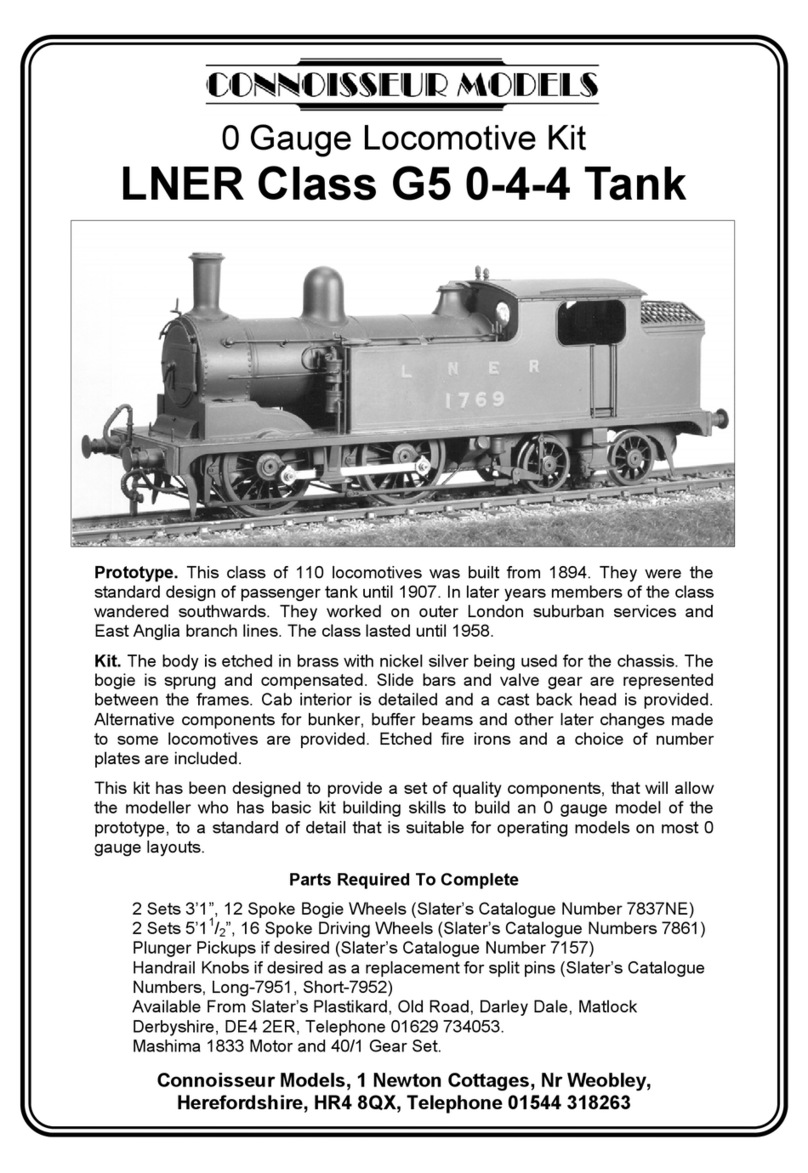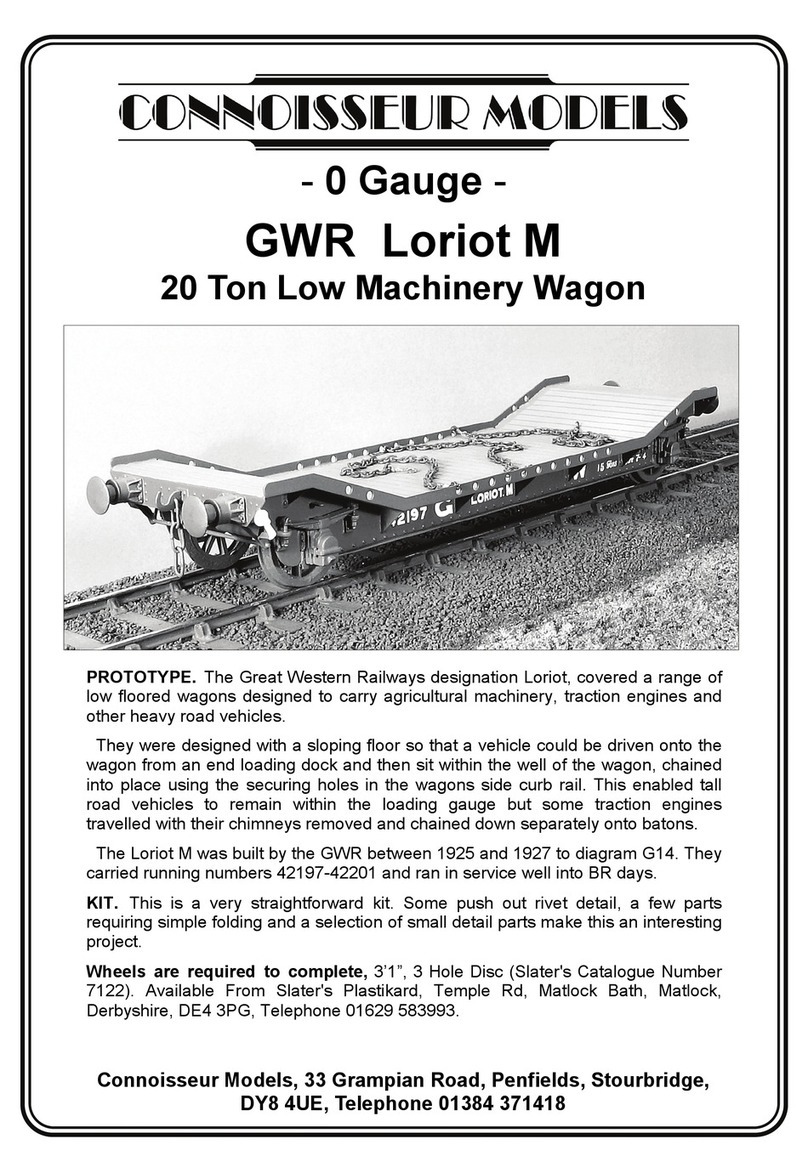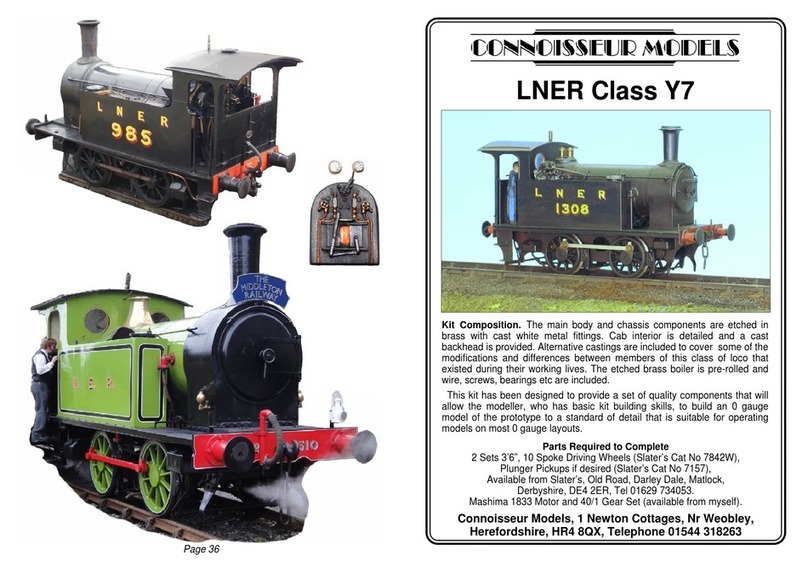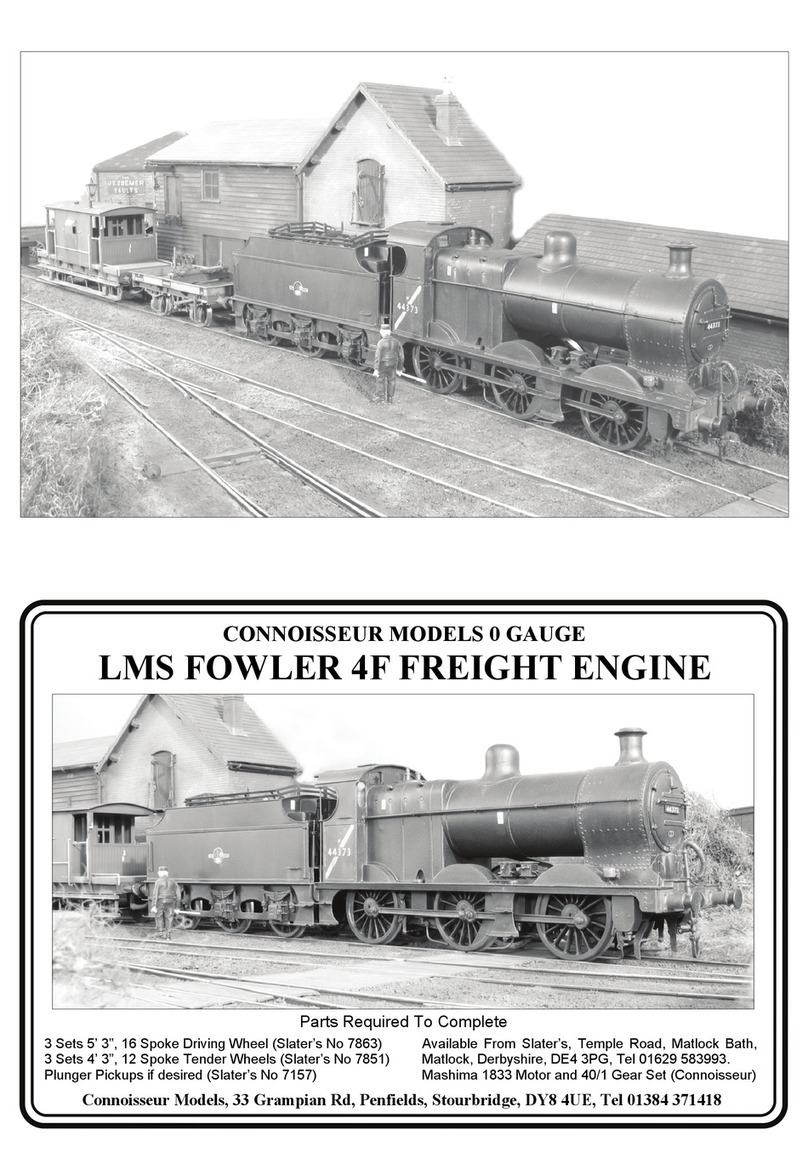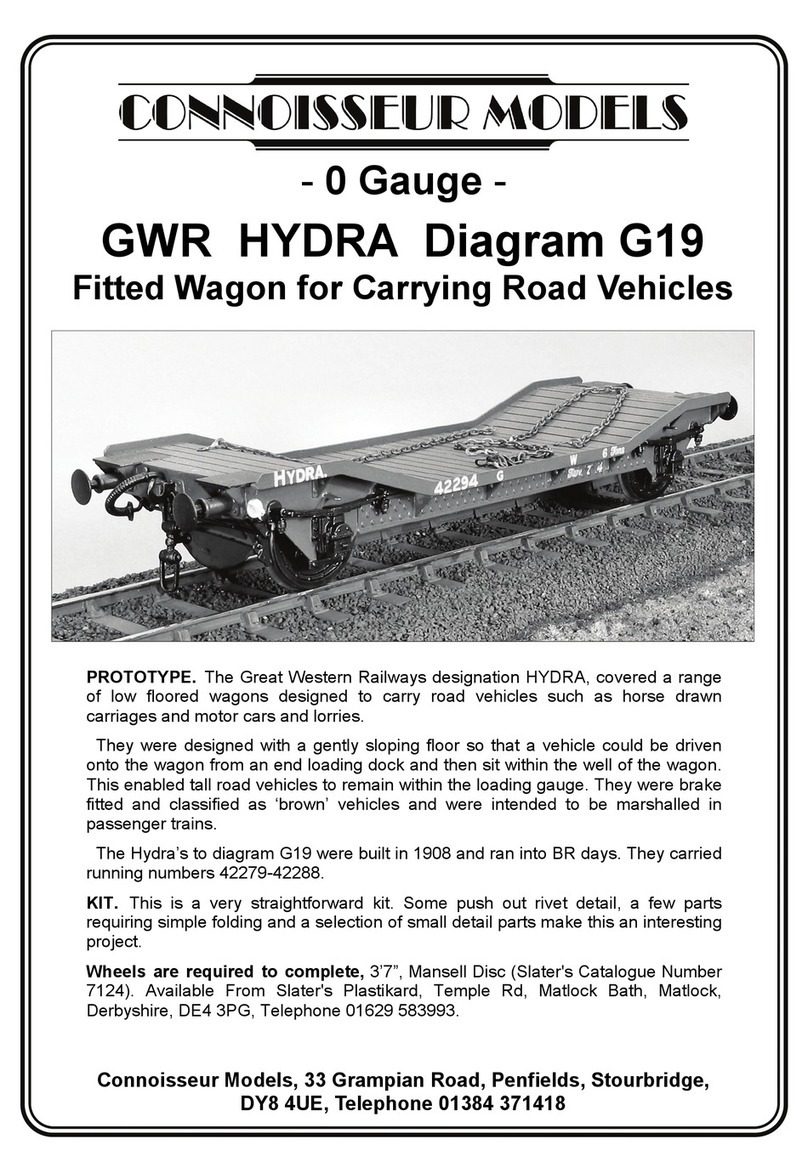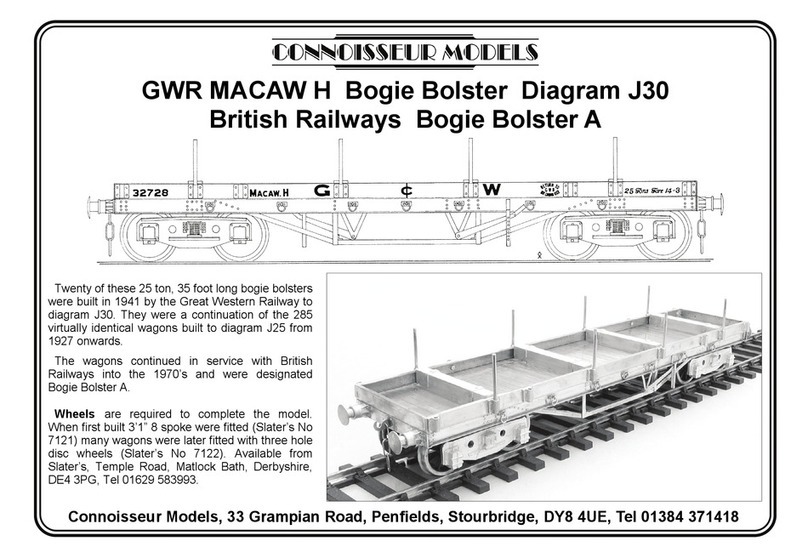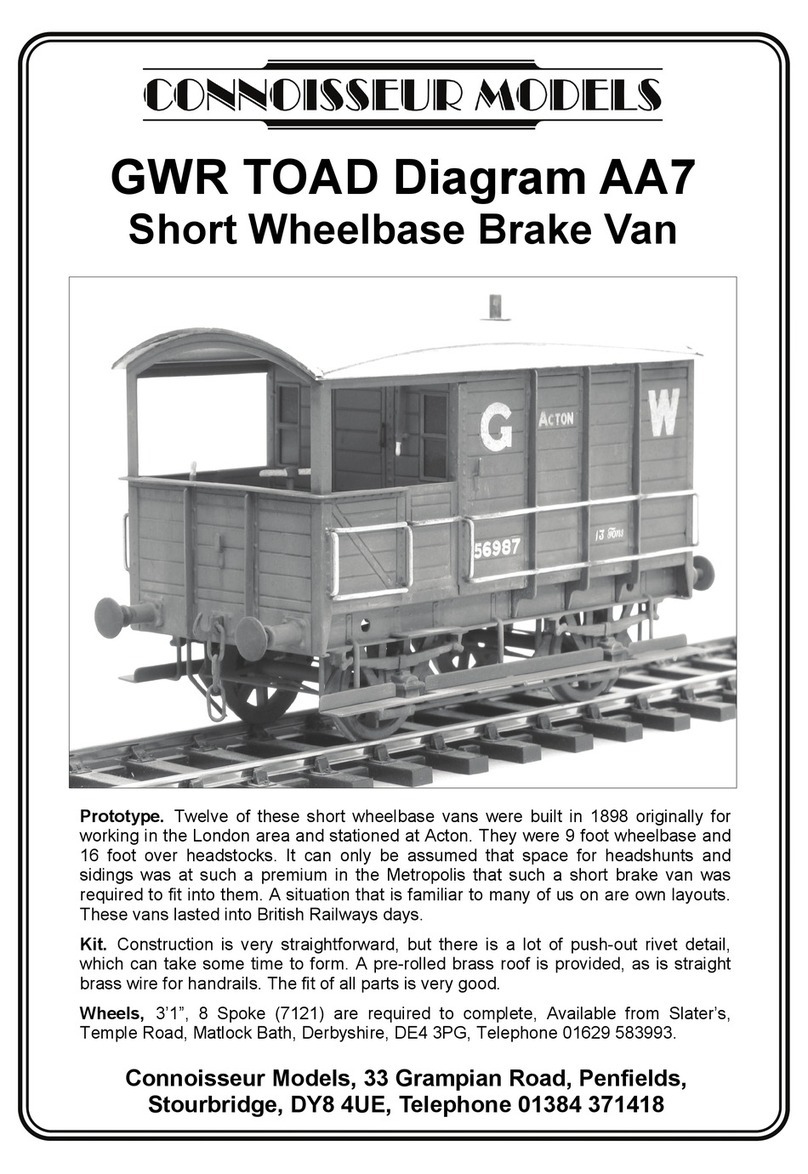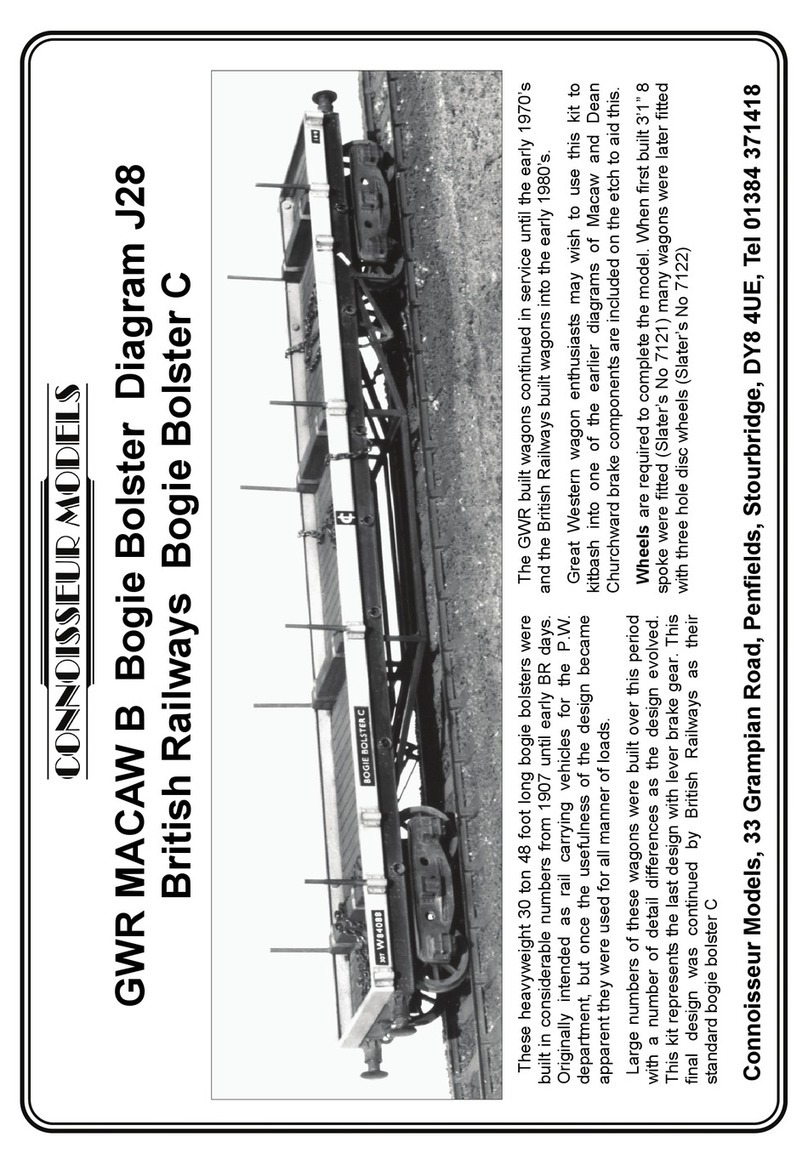Check with an engineers square that the outer ends of the body are square and level to each
other. If not, push the two sides in opposite directions until they are. It is important that the outer
ends are square but if to achieve this the inner cabin ends are slightly out of square this wont be
noticed. Now fold up the tabs to support the floors and then fit the floors, parts 5. Once these are
fitted everything will be solid, so just keep checking that the body is not twisting as you solder them
into place.
2. Now remove the ends, parts 6, from the fret, remove waste and then push out (emboss) the
eight bolt heads. This is best achieved with a rivet-forming tool. Alternately, you can use a scriber,
with the point rounded off slightly on an oilstone. Place the part face down onto a block of softwood
and then firmly press down into the half etched hole. This may distort the part so gently correct this
by bending back with finger and thumb pressure. I have shown all the bolt heads on the main
drawing, mostly on the solebars, so use this to help you to check that you have not missed any.
Now fold the bottom buffer beam channel, fit coupling plate, part 7, and strip, part 8. Now fit the
ends to the body. The slightly wider buffer beam (headstock) should help to locate the end in the
correct position, but you may find it helpful to fold up a solebar and use this to double check that the
end is positioned correctly. Tack solder at the bottom of the ends first and check that they are on
squarely (place the assembly on to a flat surface and if the body doesn’t rock from corner to corner
you should be about right). Run a generous fillet of solder on the outside face, from buffer beam to
roofline, working about 1/3 of the joint on alternative sides (this will help prevent distortion from a
build up of heat). Once all four corners have fillets of solder, you can dress them with a flat file to
blend in the joints and give a clean sharp corner. Clean up with fibreglass brush and hopefully the
joints will be invisible after painting (but be careful that you don’t remove the embossed bolt heads).
Once the ends were fitted I found that there was a slight gap between the floor and the inside of
the ends. I fitted a couple of thin strips of waste etch on the underside of the floor to bridge this gap.
If you use plenty of flux and a generous amount of solder, you should find that the solder runs
through and neatly fills the gap when viewed from the top.
3. Now fit the bottom corner strapping, parts 9, and top, parts 10. I tin the back of the parts first
and then remove them from the fret and clean off the tags. I then hold the part in place with the end
of a file (lining up the handrail hole) and apply plenty of flux and a dry iron to the edge of the part
until molten solder runs out from all the edges. I then fold the strapping around the end, pressing
with a flat file at the corner to form a sharp fold (you may need a few strokes with a square file to
remove any solder that has run out onto the back of the strapping and will prevent a sharp corner).
Now clean up around the strapping with a knife blade and fibre brush.
If you have not already done so, push out bolt heads and fold up solebars, parts 11, (bending bars
will be very helpful for this). Form bolt heads on the triangular reinforcing plates, parts 12, fold up
and fit to solebar. Again tin the backs and hold in place with a knifepoint as you solder them using
plenty of flux and a minimum of solder on the iron tip. Then fit the tops of the footboard brackets,
parts 13, noting that there are half etched marks to help with their location. I prefer to detail the
solebars before fitting as I find it is easier at this point to fit parts and then clean off excess solder
with a knife blade, dressing the tops of the triangular brackets with a file.
Now fit the solebars to the body. There are fold-down tabs that the rear of the solebar fits against
and these help set the solebars at the correct distance apart (43mm). Fold these tabs back into the
body once the solebar is positioned or they will prevent the fitting of castings later. Now fit the buffer
beam (headstock) to the solebar reinforcing plates, parts 14, which will help to hide any gap
between solebar and buffer beam.
I then fitted the handrails, made from 0.7mm brass wire. I find some strips of thin card (0.8mm-
1mm thick) useful to help space out the handrails from the body as they are being soldered into
place. I fitted all the vertical handrails first (make sure that the ends of the wire doesn’t come too far
inside) and then the horizontal ones. The horizontal side handrail is supported by two split pins
either side of the ducket plate
Page 7
